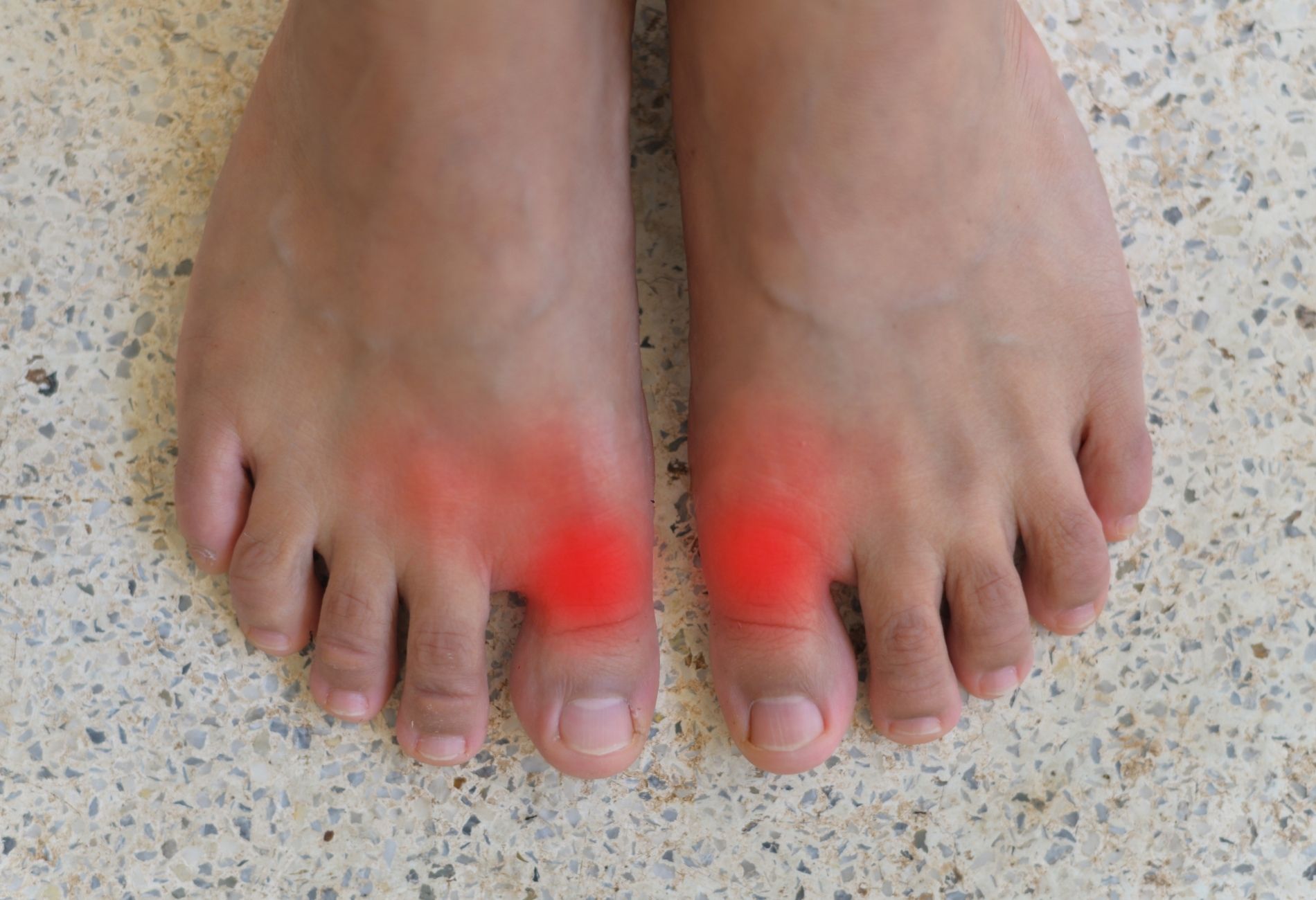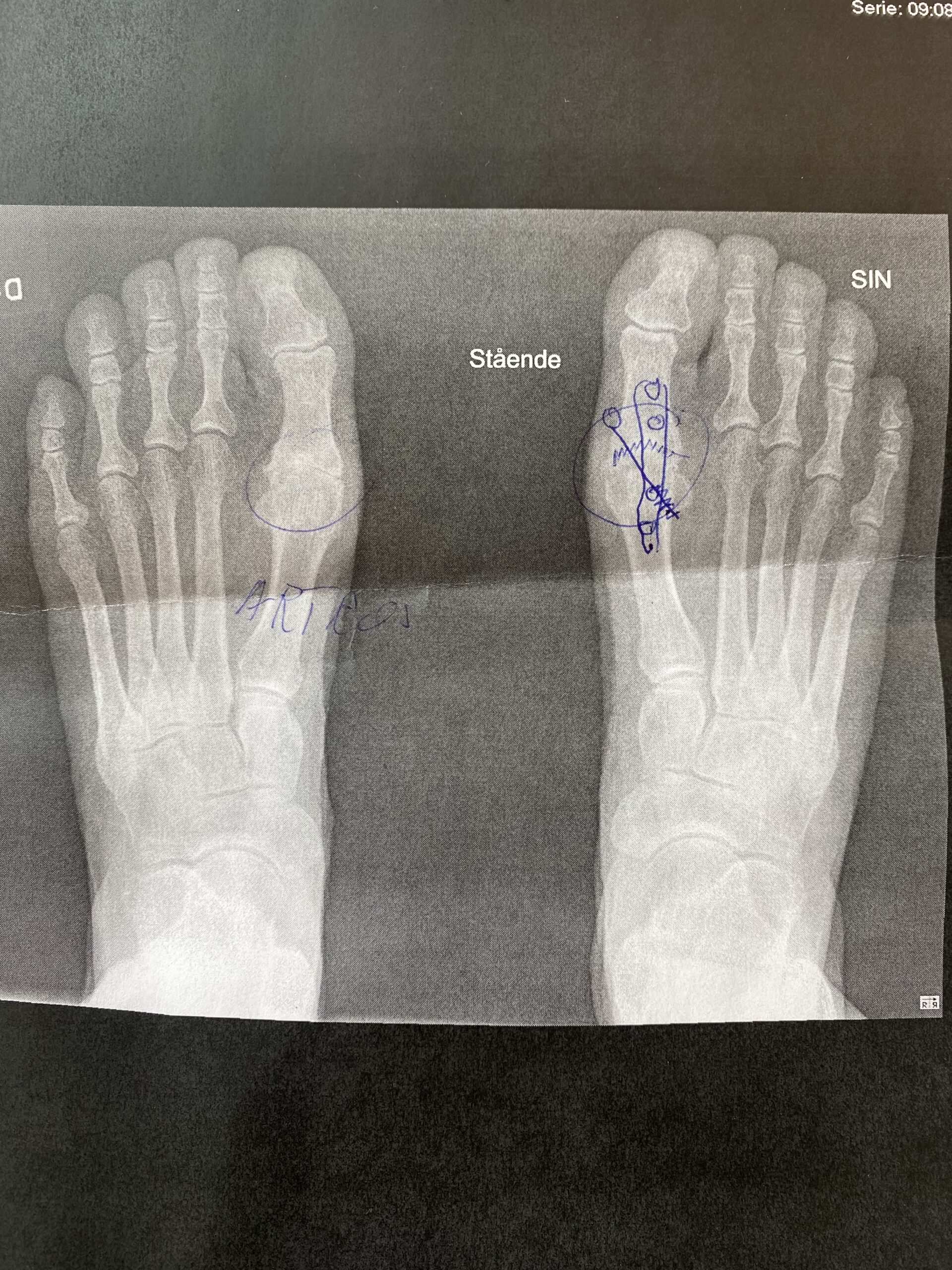Hallux Rigidus
Hallux Rigidus
Hallux Rigidus is when the joint of the big toe is stiff, and there may have started to develop arthritis in the joint. Hallux Rigidus usually occurs due of the big toe does not bend under load. Hallux Rigidus can also occur after an injury where the joint has been damaged. Symptoms include joint stiffness and pain when walking. There is a swelling around the joint, and there are bone deposits on the joint, which can lead to difficulty in wearing shoes. X-rays can show that there is arthritis in the joint.
To treat hallux Rigidus, we are working on getting the movement back in the big toe joint. Usually, the primary cause is an underlying condition called Functional Hallux Limitus, which we treat first. We do this with the device StretchPower. The pain usually arises from the joint not moving, and there is increased pressure on the joint. We get the movement started, and the pain usually subsides completely. Even if the X-ray shows arthritis in the joint, it’s usually getting pain-free. It is not arthritis that causes the pain. It is the muscular weakness around the joint. A strong joint with arthritis does not have to hurt.
THIS IS HOW THE TREATMENT IS DONE
The treatment for hallux rigidus is to regain the movement in the joint and correct the condition Functional Hallux Limitus.
Treatment step by step
- First, we go through the cause of the problem, and we look at the posture of the foot.
- Then strength and mobility tests are performed on the feet.
- We treat the joints that do not move as they should.
- Then we have a basis on how we should treat the feet.
- For Hallux Rigidus, we must treat the right muscles to release the tension that gives the pain and reduced mobility.

- The treatment is done with a device called StretchPower. With the help of a bar, we expose the lower leg to pressure so that the ankle is bent, mobility increases, and the error is corrected. Before the treatment begins, we adjust the leg in the correct position in StretchPower to get the desired effect on the treatment.
- After the treatment, we go through how you walk and use your gait. The walking pattern always needs to be corrected so that you start using your feet in the right way and bring out the function of the foot when you walk
Patient case
Hey Vesa!
Today I have been to the orthopaedic surgeon— (The name and the clinic are not shown)—. Attached are the X-rays he showed me. After all, I don’t feel like having surgery. He said that there is nothing to grind away (as in early osteoarthritis), but that it is rigid surgery that applies and with the risks/consequences that entails. If I want, I can try 1-2 cortisone injections to see if it makes a difference (I’m not keen on that either). I found the orthopaedic surgeon to be very honest and gave me the impression that it is not 100% that it will get better with an operation and the risk that the bone will not heal together and with a long convalescence. He meant that if you have so little pain that you can walk a few kilometres, you will not feel that the operation was a good choice.
I am so grateful that I “found” you and that you managed to make me so pain-free that I don’t have pain when I sleep and that I (if I walk correctly) can walk several kilometres. And that I can maintain a tolerable life, including riding. 😊
See you again in a couple of weeks!
Greetings —–

